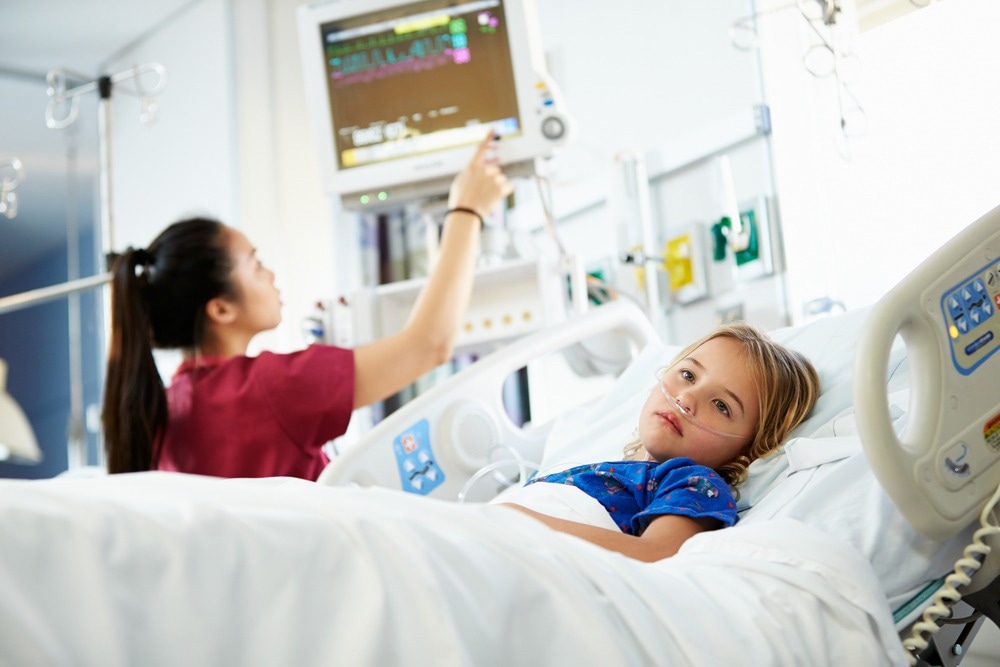In a recent study published in the Journal of American Medical Association (JAMA) Pediatrics, researchers estimate the risk of multisystem inflammatory syndrome in children (MIS-C) in Denmark. MIS-C is a severe manifestation of severe acute respiratory syndrome coronavirus 2 (SARS-CoV-2) infection in children and adolescents.

Study: Risk and Phenotype of Multisystem Inflammatory Syndrome in Vaccinated and Unvaccinated Danish Children Before and During the Omicron Wave. Image Credit: Monkey Business Images / Shutterstock.com
About the study
In the current prospective study, researchers estimate the risk of MIS-C among vaccinated and non-vaccinated subjects during the Omicron wave. Individuals aged 17 years or younger with MIS-C from 18 Danish pediatric departments were included.
Patients were infected with SARS-CoV-2 between January 1, 2022, to February 1, 2022, which is when the SARS-CoV-2 Omicron variant was the dominant circulating strain in Denmark. The authors utilized previously reported data to compare MIS-C between Omicron and pre-Omicron waves.
The risk of MIS-C was calculated per one million infected cases (children/adolescents). The researchers applied 1.5 to 2.1 multipliers to laboratory-confirmed infections to obtain an estimated number of infections.
A multiplier of 1.5 was applied for individuals between the ages of five and 17 years to SARS-CoV-2 infections in February 2022, which was based on seroprevalence in adult blood donors. A multiplier of 2.1 was used for those between ages zero and four years of age.
Multipliers of 1.5 and 2.1 were used during the Delta wave, whereas 2.4 was used for both age groups during the wild-type wave. The estimated number of infections was determined to avoid underestimating the actual number of infections, as not all infected individuals were tested.
Risk ratios were computed using Fisher’s exact test. Chi-squared tests or two-tailed Mann-Whitney U tests were used to compare patient characteristics.
Study findings
A total of 583,618 SARS-CoV-2 infections were estimated during the study period. Of these, the authors identified one vaccinated and 11 non-vaccinated patients with MIS-C. MIS-C was not identified among 31,516 estimated cases with SARS-CoV-2 reinfection.
The risk of MIS-C was significantly lower during the Omicron wave among vaccinated individuals as compared to non-vaccinated subjects. The risk of MIS-C was lower among non-vaccinated subjects during the Omicron wave as compared to during the Delta or wild-type waves. The MIS-C phenotype was similar during pre-Omicron and Omicron waves.
Conclusions
The MIS-C risk was significantly lower during the Omicron wave than pre-Omicron waves. This could be due to the reduced ability of the SARS-CoV-2 Omicron variant to induce hyperinflammation or the decreased risk after reinfection.
The risk of MIS-C was also significantly lower during the Omicron wave after vaccine-breakthrough infections relative to non-vaccinated subjects. This might be due to vaccination-induced immune modulation, which renders the immune system less susceptible to SARS-CoV-2-induced hyperinflammation.
One of the study’s limitations was the small size of the population, which resulted in fewer MIS-C cases. The multipliers used in the study were also lower than those previously used for the United States population due to the thorough testing capacity in Denmark.
Taken together, the current study reported a significantly lower risk of MIS-C in the Danish population after infection with the SARS-CoV-2 Omicron variant as compared to pre-Omicron variants, as well as a reduced MIS-C risk after vaccine-breakthrough infection.
Journal reference:
- Holm, M., Espenhain, L., Glenthøj, J., et al. (2022). Risk and Phenotype of Multisystem Inflammatory Syndrome in Vaccinated and Unvaccinated Danish Children Before and During the Omicron Wave. JAMA Pediatrics. doi:10.1001/jamapediatrics.2022.2206